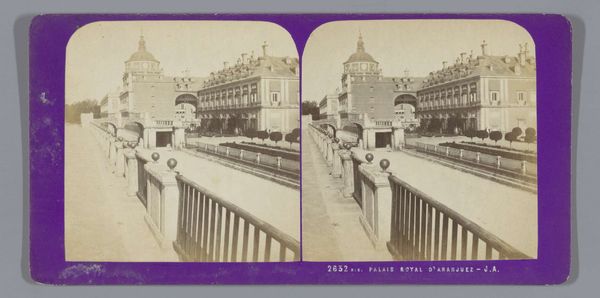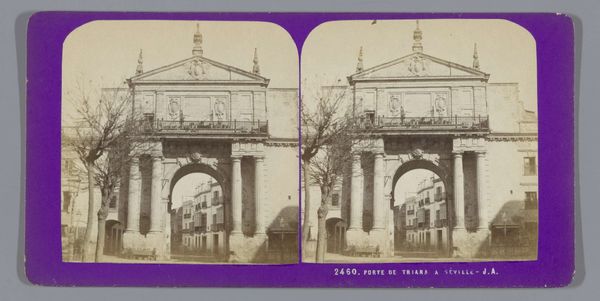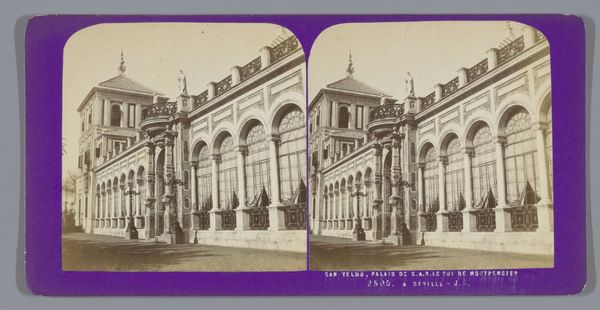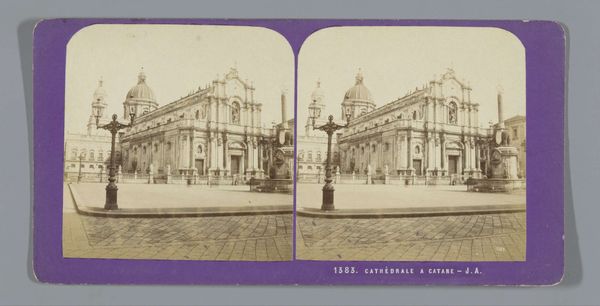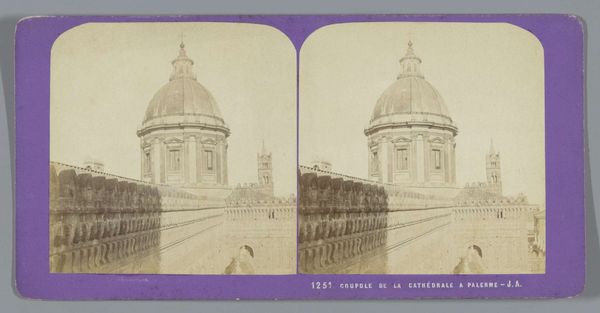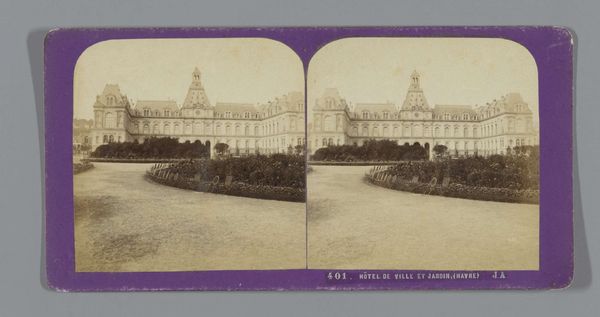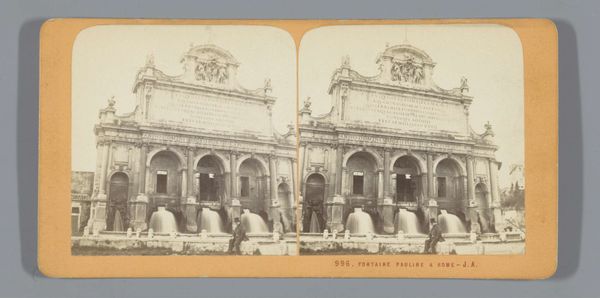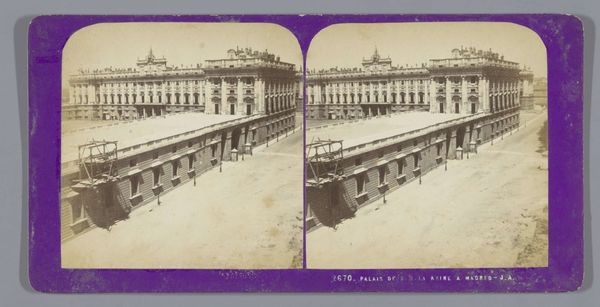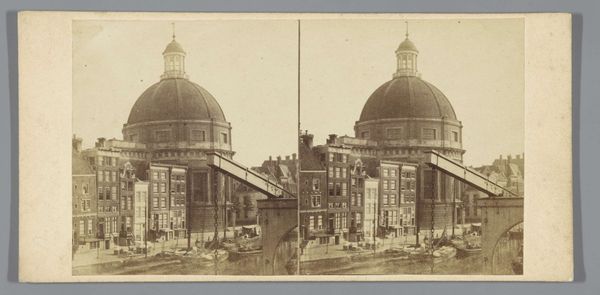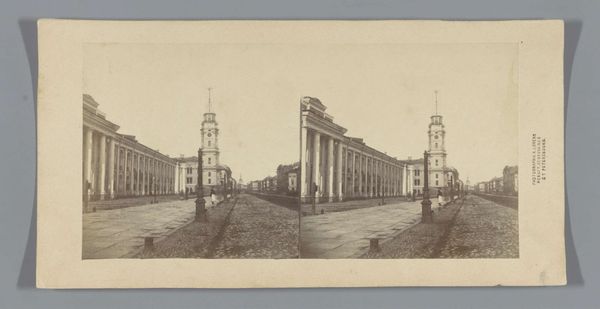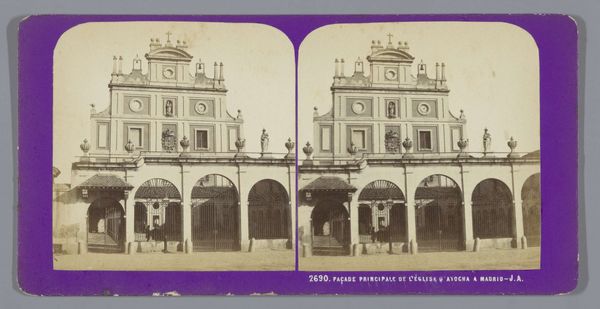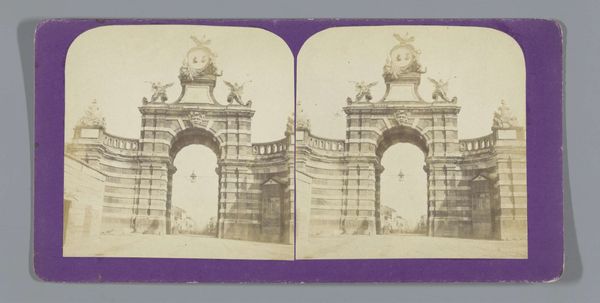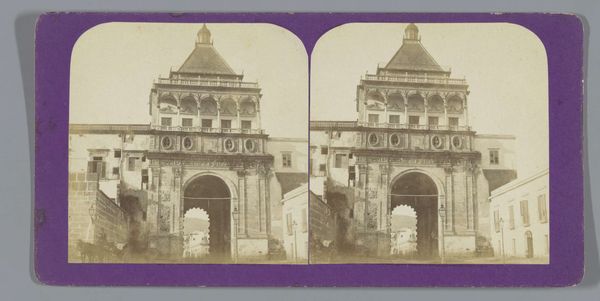
Dimensions: height 85 mm, width 170 mm
Copyright: Rijks Museum: Open Domain
Editor: This photograph by Jean Andrieu, titled "Gevel van het Koninklijk Paleis van Aranjuez," dating back to sometime between 1862 and 1876, showcases a striking cityscape. The building has a quiet symmetry, yet also appears incredibly imposing. How do you interpret this work, especially regarding its neoclassical style and the feeling it evokes? Curator: Well, what visual elements stand out to you, especially those that may trigger symbolic recognition? Editor: The arches, definitely, and the dome... they feel almost Roman, echoing an imperial past. Curator: Precisely. The artist employs these architectural forms as visual symbols of power and continuity. Think about the conscious recall of historical empires and associated aesthetic ideals in 19th-century Europe. The photograph not only documents the palace but evokes a cultural memory, framing monarchy within a lineage of grandeur. It’s interesting, isn’t it, how buildings themselves can perform as cultural symbols? Do you sense other resonances at play here? Editor: I think the ordered design, captured in print, lends it an air of established tradition…an appeal to permanence. The shadows and photographic clarity contribute to this. Curator: Yes, and consider how the use of photography itself—a relatively new medium at the time—impacts that message. Does it enhance the palace's authority, or perhaps subtly challenge it? This interplay is a nexus where technology, art, and societal power converge. Editor: It’s made me reconsider photography’s capacity for cultural commentary beyond simple documentation. Curator: Indeed. The power of symbolic language in images goes far beyond surface appearances.
Comments
No comments
Be the first to comment and join the conversation on the ultimate creative platform.
